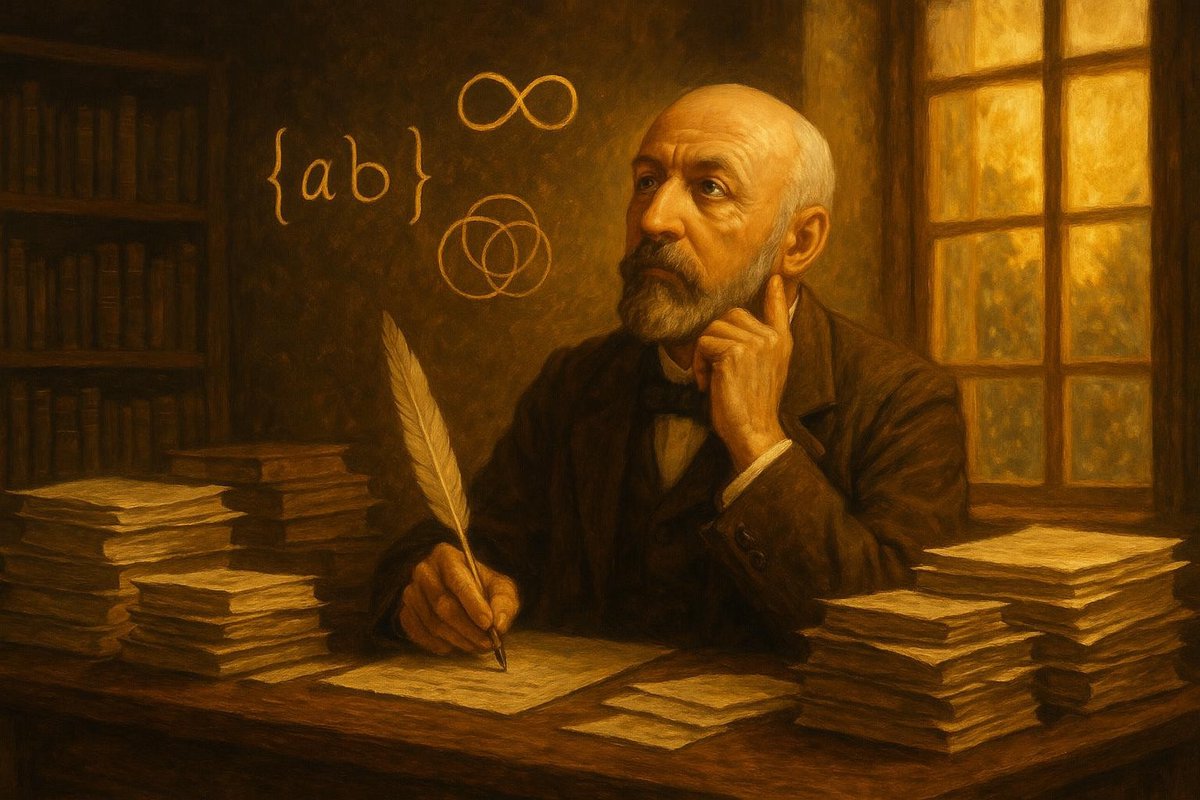
Unpacking the Infinite: A Journey into the Unknown
What does it mean for something to be infinite? At first glance, infinity seems simple: it’s just really, really big, right? But as we dive deeper, the concept becomes more mysterious and intriguing. Imagine trying to count the grains of sand on a beach or the stars in the sky. Infinity defies our intuition, stretching beyond the limits of our imagination.
Before Georg Cantor’s time, infinity was viewed as a singular, almost mystical idea. The ancient Greeks, for instance, grappled with the concept, often associating it with the divine or the intangible. Mathematicians were comfortable with the idea of potential infinity—like a line extending endlessly—but struggled with the notion of actual, distinct infinities.
- Before Cantor, infinity was singular and mystical.
- Potential infinity was understood; actual infinity was not.
- Infinity was seen more as a concept than a measure.
Georg Cantor, working in the late 19th century, shattered these preconceived notions by showing that not all infinities are equal. His work planted the seeds for modern set theory, ultimately transforming our understanding of numbers and their infinite possibilities.
Surprising Facts: Different Sizes of Infinity
One of the most astonishing revelations from Cantor’s work was the idea that there are different sizes of infinity. Yes, you heard that right! Some infinities are larger than others. How can this be?
Consider the set of all natural numbers: 1, 2, 3, and so on. Now, compare it to the set of all real numbers between 0 and 1. Surprisingly, Cantor proved that the latter set is uncountably infinite, meaning its size is greater than the set of natural numbers, even though both are infinite!
- The set of real numbers is larger than the set of natural numbers.
- Cantor’s diagonal argument was pivotal in this discovery.
- This challenged the traditional view of infinity as a monolithic concept.
This discovery sparked debates and even controversy. The mathematical community was initially resistant, as the idea seemed paradoxical. Yet, Cantor’s proof was irrefutable, and as mathematicians grappled with these new dimensions of infinity, they opened doors to new realms of mathematical inquiry.
What Science Says: Cantor’s Legacy
With Cantor’s introduction of set theory, mathematics experienced a paradigm shift. By establishing a rigorous framework for dealing with infinity, Cantor laid the groundwork for modern mathematical analysis and topology. His ideas have since permeated various fields, from computer science to philosophy, influencing how we perceive and interact with the infinite.
Interestingly, Cantor’s work also touched on philosophical questions about the nature of reality and the universe. Are there truly infinite possibilities, or is infinity a construct of the human mind?
- Cantor’s set theory created a new mathematical landscape.
- His work is foundational in mathematical analysis and topology.
- Infinity challenges our understanding of reality and perception.
Many people believe that Cantor’s insights into infinity have philosophical implications, suggesting that our universe might be one of many possibilities, each with its own rules and dimensions. This reflects a profound shift not only in mathematics but also in how we conceptualize existence itself.
What It Means for Us: Beyond Mathematics
The implications of Cantor’s discovery extend far beyond the realm of mathematics. By showing that infinities can differ in size, Cantor encouraged a new way of thinking—a reminder that the universe is more complex and mysterious than it appears.
For students and enthusiasts alike, Cantor’s ideas invite us to explore the unknown, to question assumptions, and to appreciate the beauty hidden within abstract concepts. His work reminds us that, even in the world of math, the boundaries of what we know are ever-expanding.
- Cantor’s ideas inspire exploration and curiosity.
- Infinity becomes a gateway to understanding the universe’s complexity.
- Mathematics is a dynamic, ever-evolving field.
Today, Cantor’s legacy lives on, inviting each of us to ponder the infinite. His contributions continue to fuel innovation, creativity, and a deeper appreciation for the wonders of mathematics.
In conclusion, Georg Cantor’s revolutionary exploration of infinity transformed modern mathematics. His bold ideas challenged the status quo and expanded our understanding of numbers, paving the way for future discoveries. Infinity, once an enigmatic concept, became a playground for the curious and the imaginative.
Fuel Someone Else’s Curiosity
As you reflect on the boundless possibilities of infinity, why not share this journey with others? Encourage friends and fellow math enthusiasts to explore the fascinating world of Georg Cantor’s ideas. Together, we can delve deeper into the mysteries of mathematics and inspire the next generation of thinkers and dreamers.

Leave a Reply